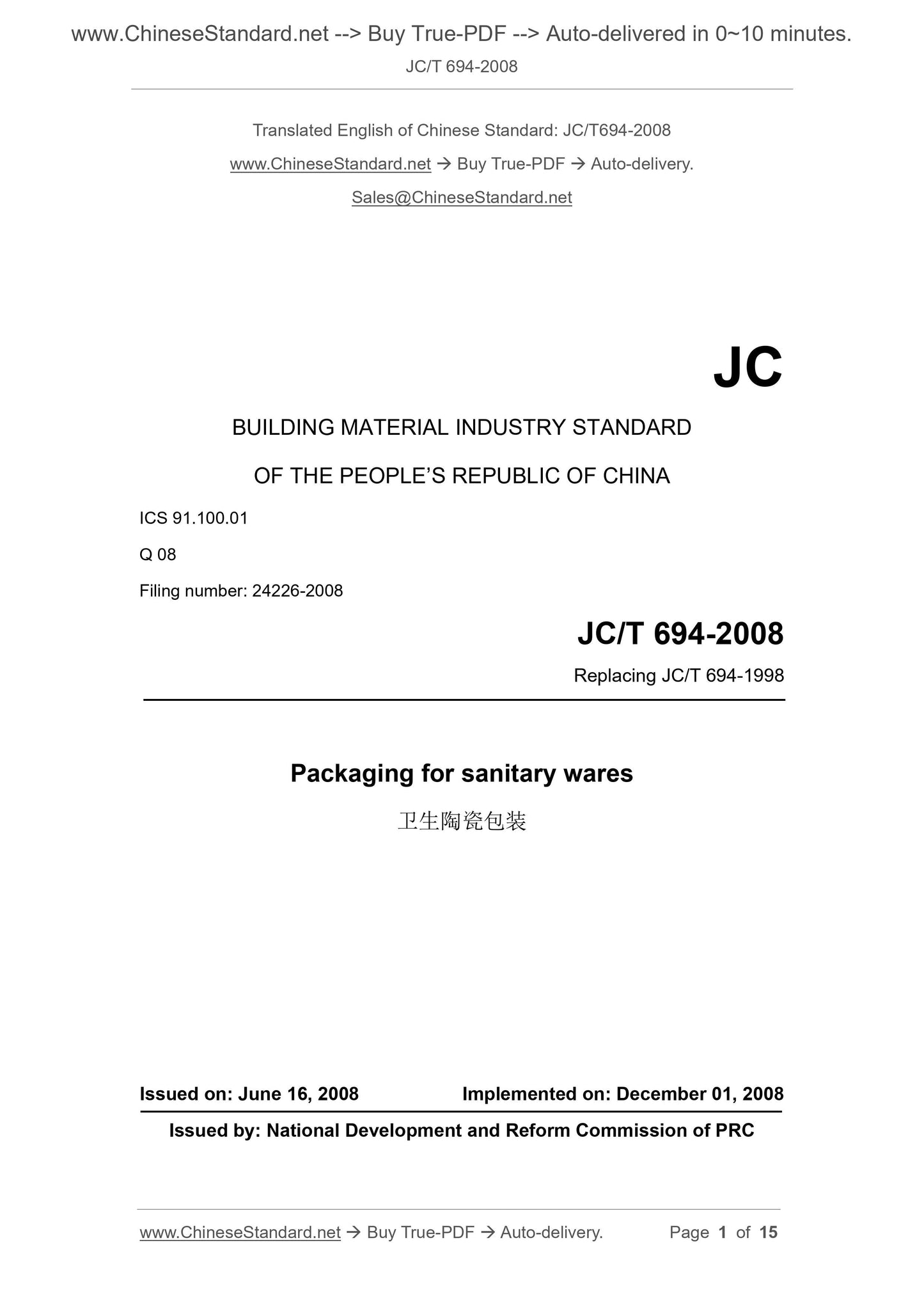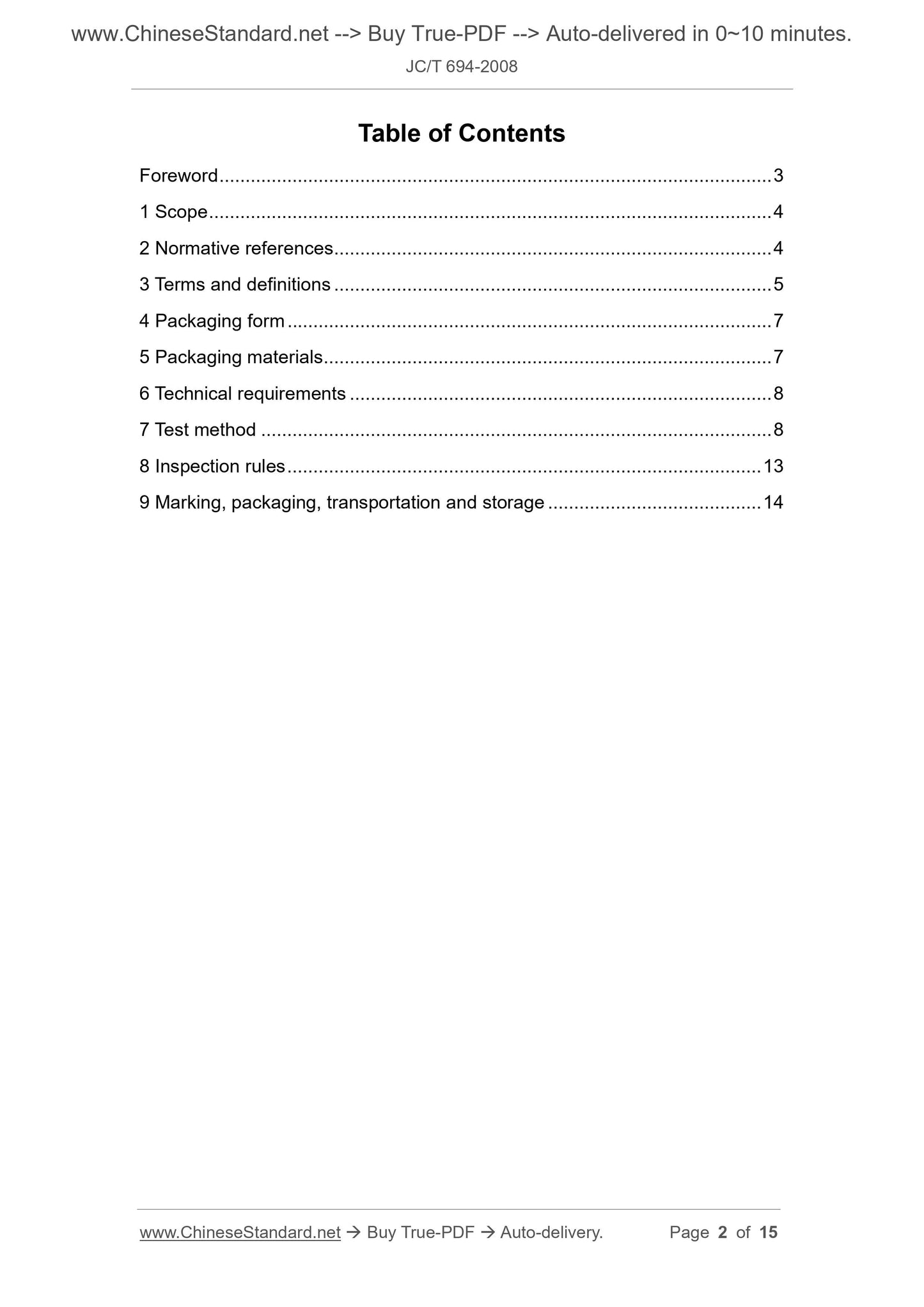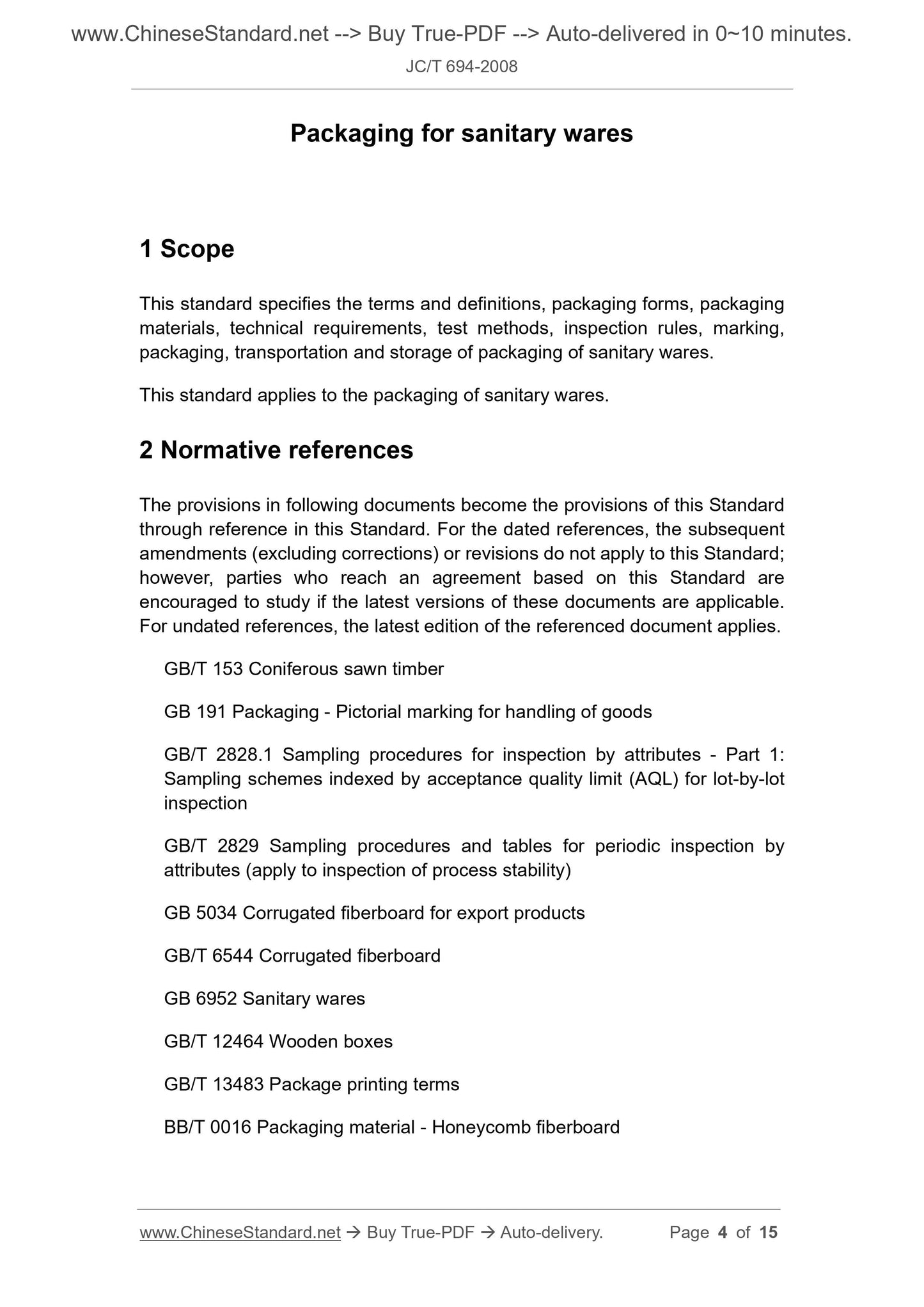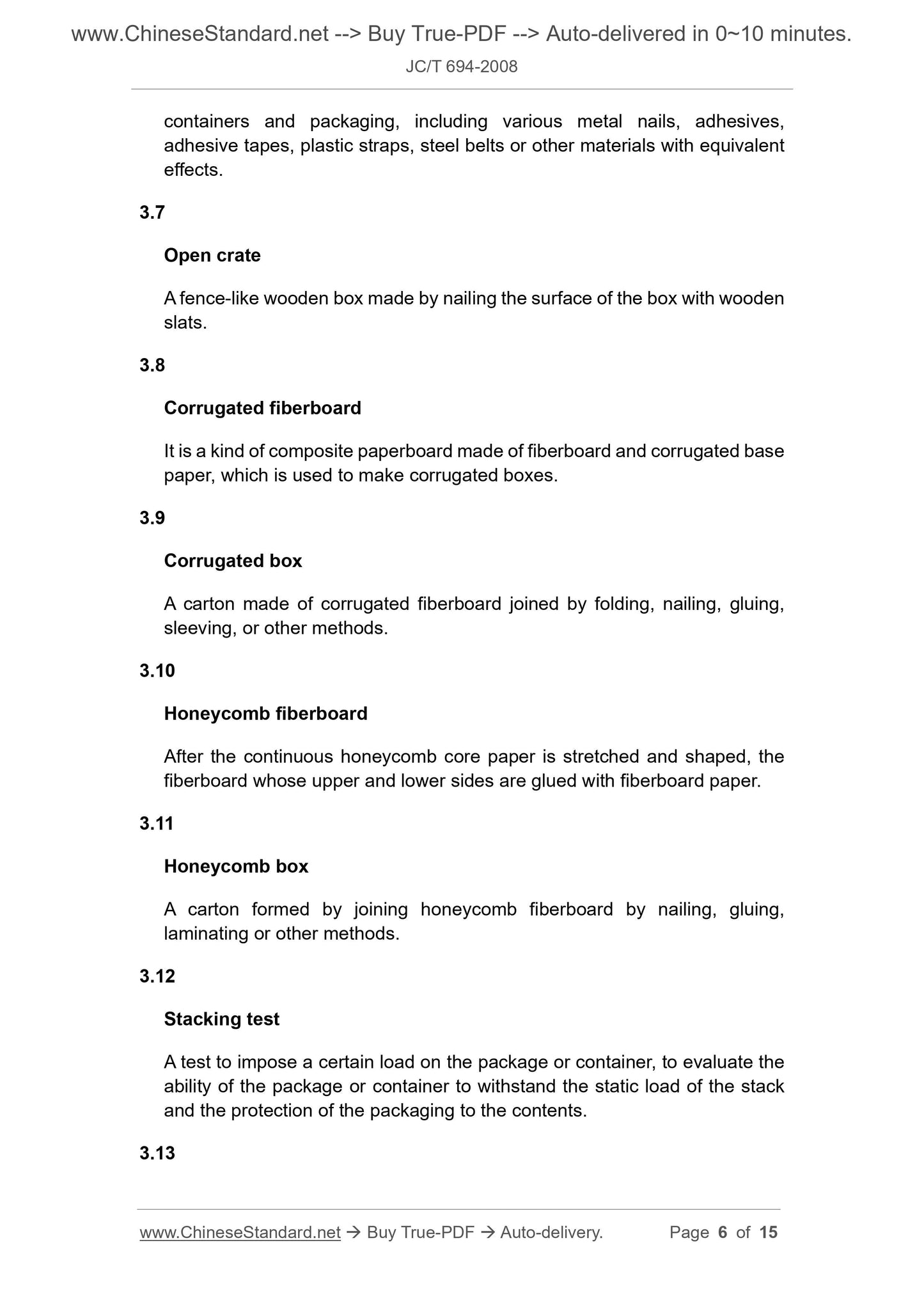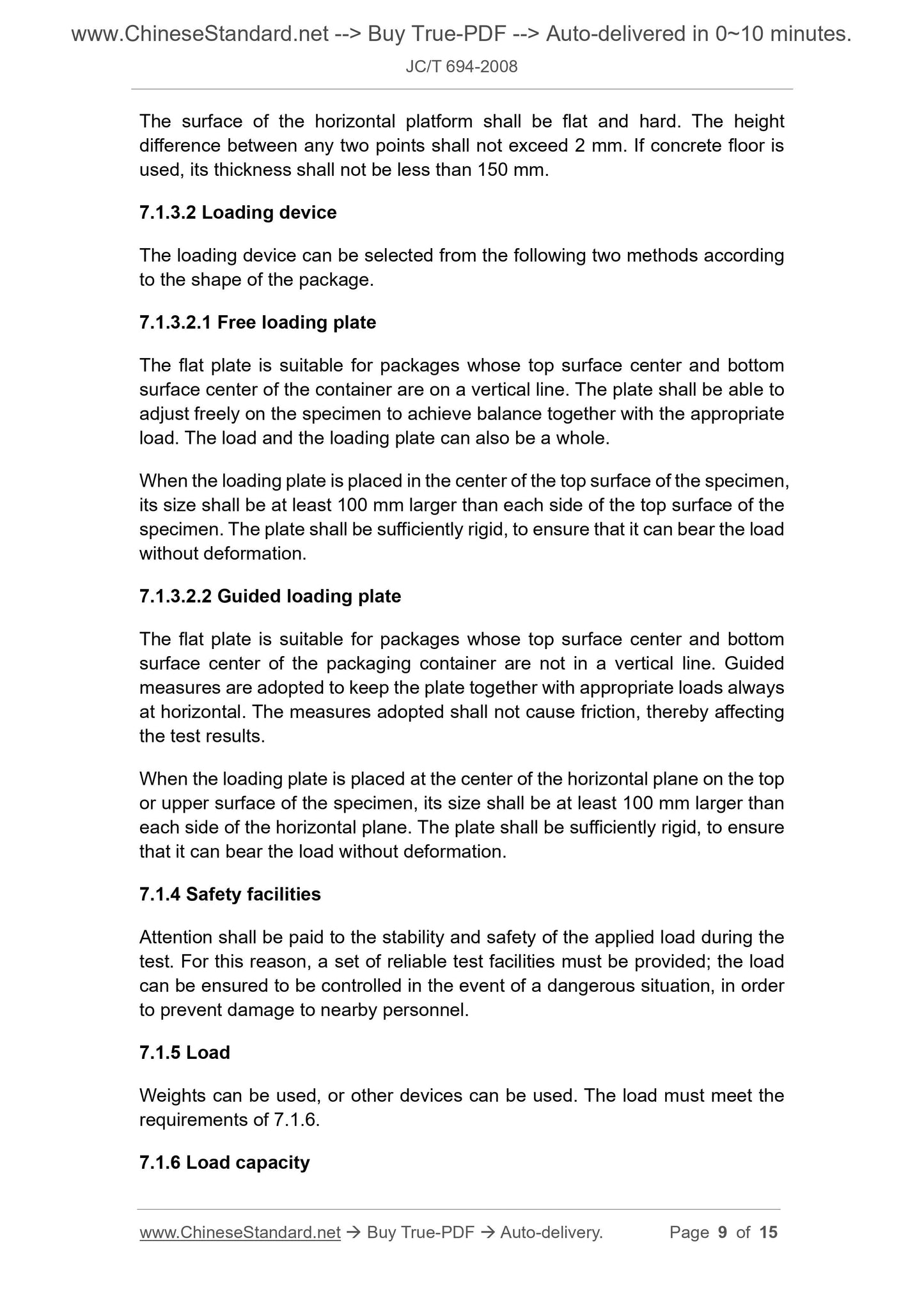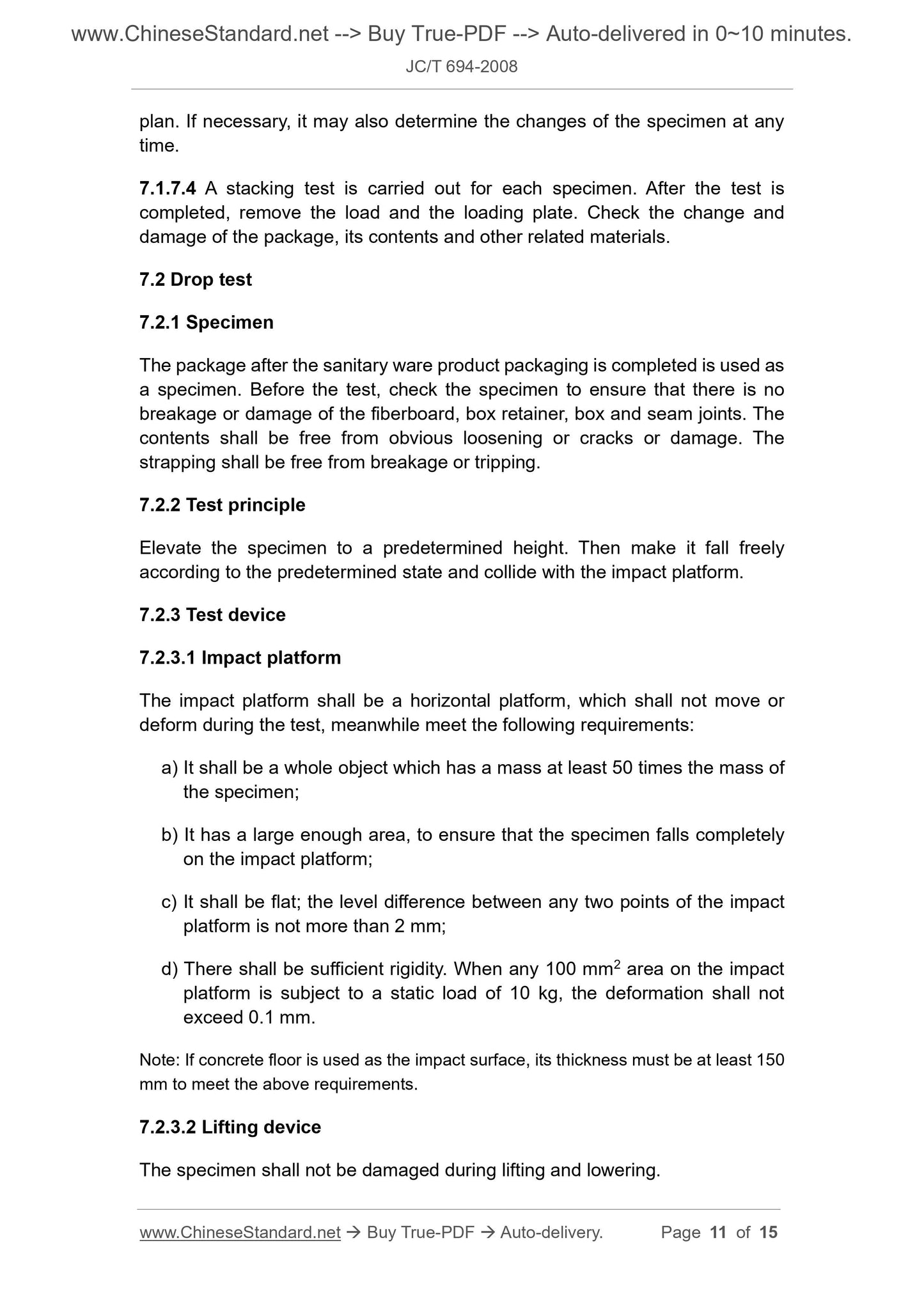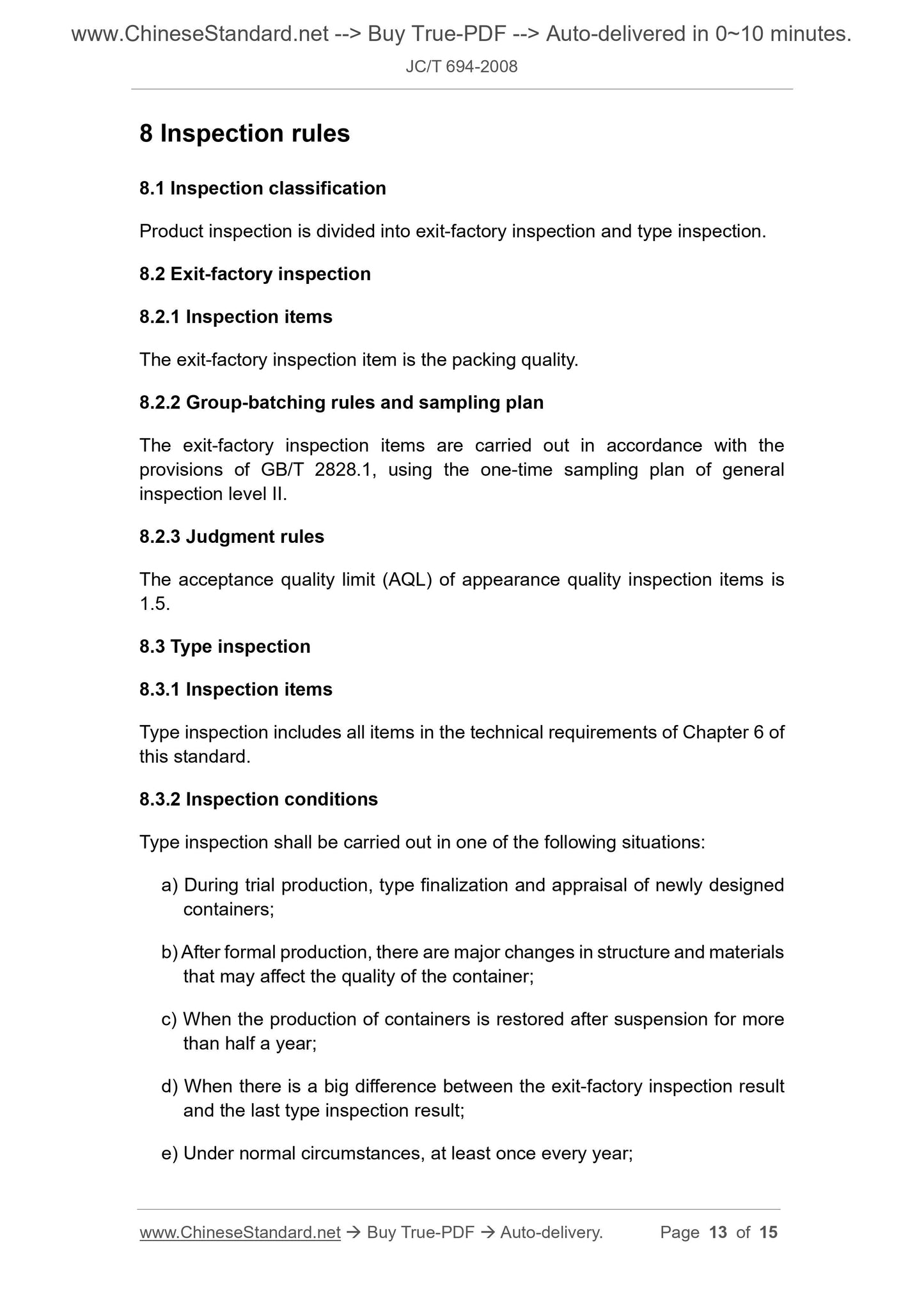1
/
of
7
www.ChineseStandard.us -- Field Test Asia Pte. Ltd.
JC/T 694-2008 English PDF (JC/T694-2008)
JC/T 694-2008 English PDF (JC/T694-2008)
Regular price
$150.00
Regular price
Sale price
$150.00
Unit price
/
per
Shipping calculated at checkout.
Couldn't load pickup availability
JC/T 694-2008: Packaging for sanitary wares
Delivery: 9 seconds. Download (and Email) true-PDF + Invoice.Get Quotation: Click JC/T 694-2008 (Self-service in 1-minute)
Newer / historical versions: JC/T 694-2008
Preview True-PDF
Scope
This standard specifies the terms and definitions, packaging forms, packagingmaterials, technical requirements, test methods, inspection rules, marking,
packaging, transportation and storage of packaging of sanitary wares.
This standard applies to the packaging of sanitary wares.
Basic Data
| Standard ID | JC/T 694-2008 (JC/T694-2008) |
| Description (Translated English) | Packaging for sanitary wares |
| Sector / Industry | Building Materials Industry Standard (Recommended) |
| Classification of Chinese Standard | Q08 |
| Classification of International Standard | 91.100.01 |
| Word Count Estimation | 10,169 |
| Date of Issue | 2008-06-16 |
| Date of Implementation | 2008-12-01 |
| Older Standard (superseded by this standard) | JC/T 694-1998 |
| Quoted Standard | BB/T 0016; GB 191; GB 5034; GB 6952; GB/T 12464; GB/T 13483; GB/T 153; GB/T 2828.1; GB/T 2829; GB/T 6544 |
| Regulation (derived from) | ?National Development and Reform Commission Announcement 2008 No.44 |
| Issuing agency(ies) | Ministry of Industry and Information Technology |
| Summary | This standard specifies the terms and definitions of sanitary ceramics packaging, packaging, packaging materials, technical requirements, test methods, inspection rules, signs, packaging, transport and storage. This standard applies to sanitary ceramic packaging. |
Share
